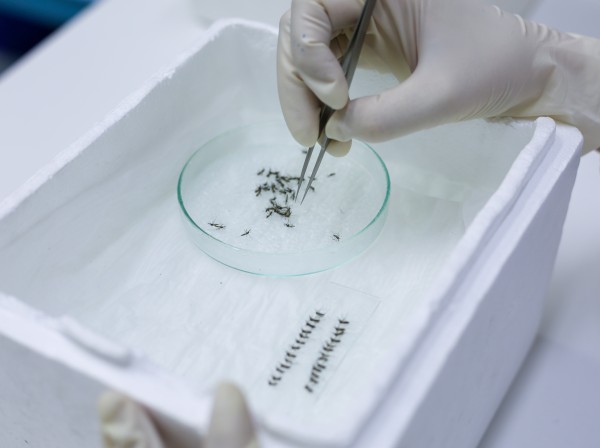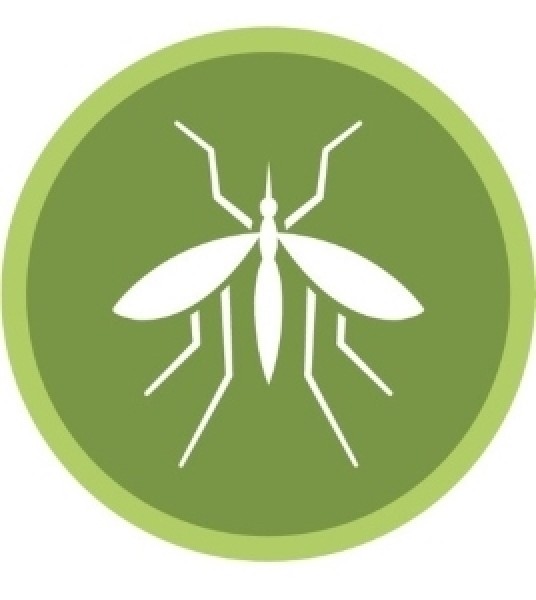Access the infographic on COVID-19 impact on local vector control.
The National Association of County and City Health Officials (NACCHO) has been monitoring the impacts of the COVID-19 pandemic on local vector programs since April 2020 through survey-based collection of information from members. Since the initial survey sent by NACCHO in April 2020, NACCHO has conducted two follow-up surveys: one in January of 2021 and another that closed at the end of July 2021.
In spring of 2020, vector programs noted that they had been experiencing varying levels of impact from COVID-19 to their routine operations, ranging from minimal impact to entire vector programs being deemed non-essential and shut down or large portions of staff being reassigned to COVID-19 response. Vector programs shared that they were experiencing continued disruptions during the follow-up survey conducted in January of 2021.
The July 2021 survey revealed that although over half of the respondents (65%) reported mosquito surveillance and/or control efforts at normal or near-normal operational levels, many (71%) also indicated that some disruptions continue to linger.
The continued disruptions noted by local vector programs in the July 2021 survey include:
Staffing Disruptions
- Increased planning to ensure normal productivity levels due to staffing issues.
- Health departments faced staff shortage due to reassignment to COVID-19 clinics or due to COVID-19 exposure or illness. Vector staff were relocated to COVID-19-related operations such as testing sites, clinics, vaccine sites, and contact tracing efforts.
- Staff have been involved with case calling, deliveries, and vaccination points of distribution (PODs).
- Trap numbers for vector control and surveillance were reported to have been reduced as staff were reassigned to assist with vaccination efforts.
- One mosquito surveillance team reported that they were diverted to COVID-19 prevention inspections at hotel properties.
Outreach & Partnership Disruptions
- One local program had to acquire interns from local universities due to a major partner backing out citing re-assignment to COVID duties.
- Child and flu vaccine rates declined.
- Community outreach and public education efforts have been non-existent.
- Office visits were canceled with vendors, industry representatives, and the public.
Despite the challenges, programs have found ways to adapt and fulfill this critical public health function while keeping their staff safe. Respondents shared lessons learned and strategies used to adapt to these challenging circumstances.
Strategies Used to Adapt to COVID-19 Challenges
- Outdoor meetings were held to reduce exposure.
- Technicians were instructed to take trucks home and go directly to the field with one technician per truck to reduce social distancing.
- Switching to online forums for outreach and education was also encouraged. One health department was able to hold a Q & A session with a large audience virtually.
- One program reported adding arbovirus detection capability in-house due to a state laboratory being used for COVID-19 over several months.
Lessons Learned
- It was recommended that back-up plans be developed in advance. One county reported an epidemic outbreak of West Nile Virus last year that was completely overlooked because of COVID-19 due to which future expansion and funding were completely lost.
- During the pandemic, individuals spend more time outdoors increasing risk of vector-borne disease. It was recommended that educational outreach for bite prevention and all vector program activities be maintained at sufficient levels to counteract a potential increase in pathogen exposure from bites by vectors like ticks and mosquitoes.
- Programs reported that communication skills during a pandemic are important.
- According to one program, building a good connection within your city can be important to gain interns from other areas, such as schools.
- One program reported that having a [range of skills] enabled staff from this program to readjust work goals based on their public health priority. This flexibility was found to be unique and benefited the community during the pandemic.
- Local vector programs who responded to the survey advise their counterparts to build in-house lab capability and programs if possible.
Looking for resources?
Resources on vector surveillance and control can be found by searching the Vector Control Toolkit in the NACCHO Toolbox. The NACCHO Toolbox is a free, online collection of public health tools that have been created and shared by members of the public health community. To view the Vector Control Toolkit, visit the NACCHO Toolbox and select “Vector Control Toolkit” from the dropdown menu.
If you have any questions about these tools or would like to submit a tool of your own to the Vector Control Toolkit, please contact the NACCHO Vector Control Program at [email protected].
For more details on NACCHO’s response to COVID-19, see our COVID-19 information page. If you would like to share how the COVID-19 response is affecting your local vector control program, please submit your stories on this short form: https://www.naccho.org/programs/coronavirus. This feedback is critical to our work to advocate on your behalf. Thank you.

